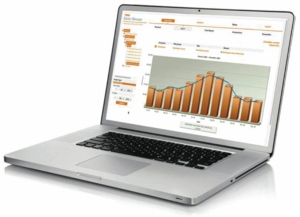Don’t just collect your data — analyse it too

As legislation has driven the increased use of metering and sub-metering in buildings, facilities and energy managers are left wondering how best to use the data they are collecting. Experts from the BCIA highlight the important steps to take.
Collecting data is only the first stage in monitoring and managing the energy efficiency of a building. Without analysis and appropriate action, gathering data from meters and sub-meters is rather like watching a bucket fill with water — without the means to stop it overflowing. And there is no doubt that many building managers feel they are drowning in data.
‘The trouble is that energy metering was brought in by legislation, so buildings are fitted with meters to comply with legislation. However, you have to go beyond that to achieve an energy-efficient building,’ says Clive Caplin general manager Europe for Automated Logic.
Clients and specifiers have a range of options on offer for managing their data. Numerous software packages are now available, and many service providers can now manage and analyse energy-use data on behalf of clients.
Steve Reid, solutions development manager for Siemens Building Technologies, says that using an outside provider to analyse data should be considered carefully. ‘The key benefit of doing the analysis on site yourself is that you keep your data and decide how to handle it. It also means that there is flexibility to implement reactive load-management strategies which could help you to benefit from “demand-response” electricity tariffs. This would be impossible if you only have access to 24-hour delayed data collected by a third-party metering provider.’
One method that can be applied in-house is degree-day analysis. This indicates how much heating or cooling should be used each day due to low or high outdoor temperatures. Using regression analysis on your energy and degree-day data shows if you are really using less energy than previous years, or if the weather has been kind to you. This analysis can therefore highlight problems with control of building services such as boilers and cooling systems.
David Field, product manager at Trend Control Systems, says that degree-day analysis has many advantages, but some caveats. ‘Degree day analysis can be good for comparing a building before and after energy-saving strategies are implemented as it takes into account environmental conditions. However, it is really a long-term analysis and in energy-saving terms this is not enough.
‘In modern offices the outdoor temperature is only one factor affecting energy performance. In some cases weather-independent loads such as, hot water, lighting and IT equipment can be a large percentage of the energy usage.'
The sooner a building manager can spot where energy is being wasted, the sooner that issue can be dealt with.
‘Daily analysis is not unreasonable,’ says Field. ‘At the very least, a building manager should know the energy profile of their building for Winter and Summer because then they can see when their building moves away from its normal operating profile and take appropriate action.’ This is where sub-metering plays an important role in identifying where variances have occurred.

Benchmarking against seasonal profiles or across a portfolio of buildings may give insight into where improvements in energy performance could be made.
Steve Reid says: ‘To carry out this level of benchmarking, I would recommend using real-time data from electrical sub-metering. With such data you can drill down to find the causes of energy over-use in particular areas of a building. For example you can spot strange loads and their causes, such as lights left on over a weekend.’
Increasingly, rapid response to information from the building can be a vital step in managing energy costs. Clive Caplin says that this helps to keep a building within its energy tariff band. ‘With the BEMS using data from all parts of the building, as well as utility meters, it can track when an energy tariff level is approached and start to automatically turn down the building services that are not required. If you purchase your energy on the basis of using x kWh per day, the BEMS can keep you within that required target.’
In order to achieve this kind of control over energy use, it is vital to use the BEMS for analysis.
‘The most powerful combination is to link the BEMS control regimes to energy-consumption data as you can implement savings directly into your strategy,’ says Field.
It is vital to ensure that information from meters and sub-meters is collected and fed into the BEMS. Ensuring that you have the right level of data analysis for your needs is very important, and should be planned carefully at the start of a project — it will be time well spent.
David Field says, ‘Clients have a lot of choices to make about how they want to manage and use their data. If you put in the time and effort at the beginning, you could save yourself a fortune in the long-term.’









